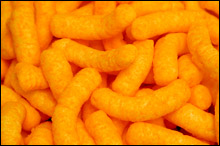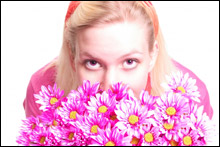Climate Culture
All Stories
-
Go, Go, Gadgets
Green gadgets and a hydrogen-powered rock band are getting noticed In the past 35 years, there’s been no shortage of inventive inventions aimed at reducing eco-footprints; we’ve come a long way from the old brick-in-the-toilet trick. Today’s new refrigerators use about a third of the power as ones sold 30 years ago, and the U.S. […]
-
Is That a Fat Lady We Hear Singing?
The era of cheap oil is coming to an end soon; duck! Cheap oil is running out. A report from the U.S. Energy Department’s Office of Naval Petroleum and Oil Shale Reserves puts the problem in stark terms: “The disparity between increasing production and declining discoveries can only have one outcome: a practical supply limit […]
-
What the warming world needs now is art, sweet art
Here’s the paradox: If the scientists are right, we’re living through the biggest thing that’s happened since human civilization emerged. One species, ours, has by itself in the course of a couple of generations managed to powerfully raise the temperature of an entire planet, to knock its most basic systems out of kilter. But oddly, though […]
-
Ten ways to turn that global frown upside down
Scientists estimate that we’ve already raised global temperatures by one degree Fahrenheit with our hapless spewing of greenhouse gases, and another one or two degrees are pretty much inevitable no matter what we do. Unstable weather, droughts, floods, and rising oceans are the likely result. We’re in the midst of the sixth great extinction, with […]
-
So tell us … what’s your dirty little environmental secret?
I know this is going to come as a shock to you all, but someone needs to speak the truth. It seems that environmentalists have a bit of a reputation for being holier-than-thou — even, dare I say it, evangelistic. In our zeal to save the planet, we both scare and bore our fellow citizens, […]
-
What’s your secret eco-sin?
Environmentalists have a reputation for being self-righteous, holier-than-thou prigs. And yeah, well, they frequently are. So in the spirit of humanizing and soul cleansing and all that, we've asked a few greens, including writers Bill McKibben and Terry Tempest Williams, to confess their environmental sins. And we're asking you to do the same!
Leave your deepest, darkest environmental sins in comments. We promise, you'll feel better afterward.
-
Mark Shelley, environmental film producer, answers questions
What work do you do? I produce films and other media about the environment. In the film world, I am executive producer of Sea Studios Foundation and a senior series producer for National Geographic Television and Film. In the foundation world, I am the executive director and cofounder of Sea Studios Foundation, and last but […]
-
Hollywood infuses green movement with star power
All signs on Capitol Hill point to a royally depressing Earth Day 2005 (that would be next Friday): inertia on global warming, revival of the industry-friendly energy bill, a widely reviled plan to address mercury pollution, the looming prospect of drilling in the Arctic National Wildlife Refuge. And though it’s the 35th anniversary of the […]
-
A Hug’s Life
Survey reveals truth to tree-hugging Californian stereotype It is often said that Californians are unfairly stereotyped as bleeding-heart tree huggers. Turns out it’s not true. The “unfairly” part, that is. A new survey reveals that more than 60 percent of Californians really have hugged trees, some 24 percent have surfed, and 21 percent think mud […]
-
Dems and Republicans buy different kinds of cars; guess who likes big American SUVs?
You could probably guess that Prius drivers tend to be Democrats and Hummer drivers tend to be Republicans. But that's just the tip of the iceberg on car-and-driver political connections, writes John Tierney in The New York Times, summarizing new market research that I find both fascinating and hilarious.
Jaguars, Land Rovers, and Jeep Grand Cherokees are very "Republican" vehicles. Volvos are the most "Democratic" cars, followed by Subarus and Hyundais. (Funny comment from Slate columnist Mickey Kaus: "Subaru is the new Volvo --that is, it is what Volvos used to be: trusty, rugged, inexpensive, unpretentious, performs well, maybe a bit ugly. You don't buy it because you want to show you have money; you buy it because you have college-professor values.")


